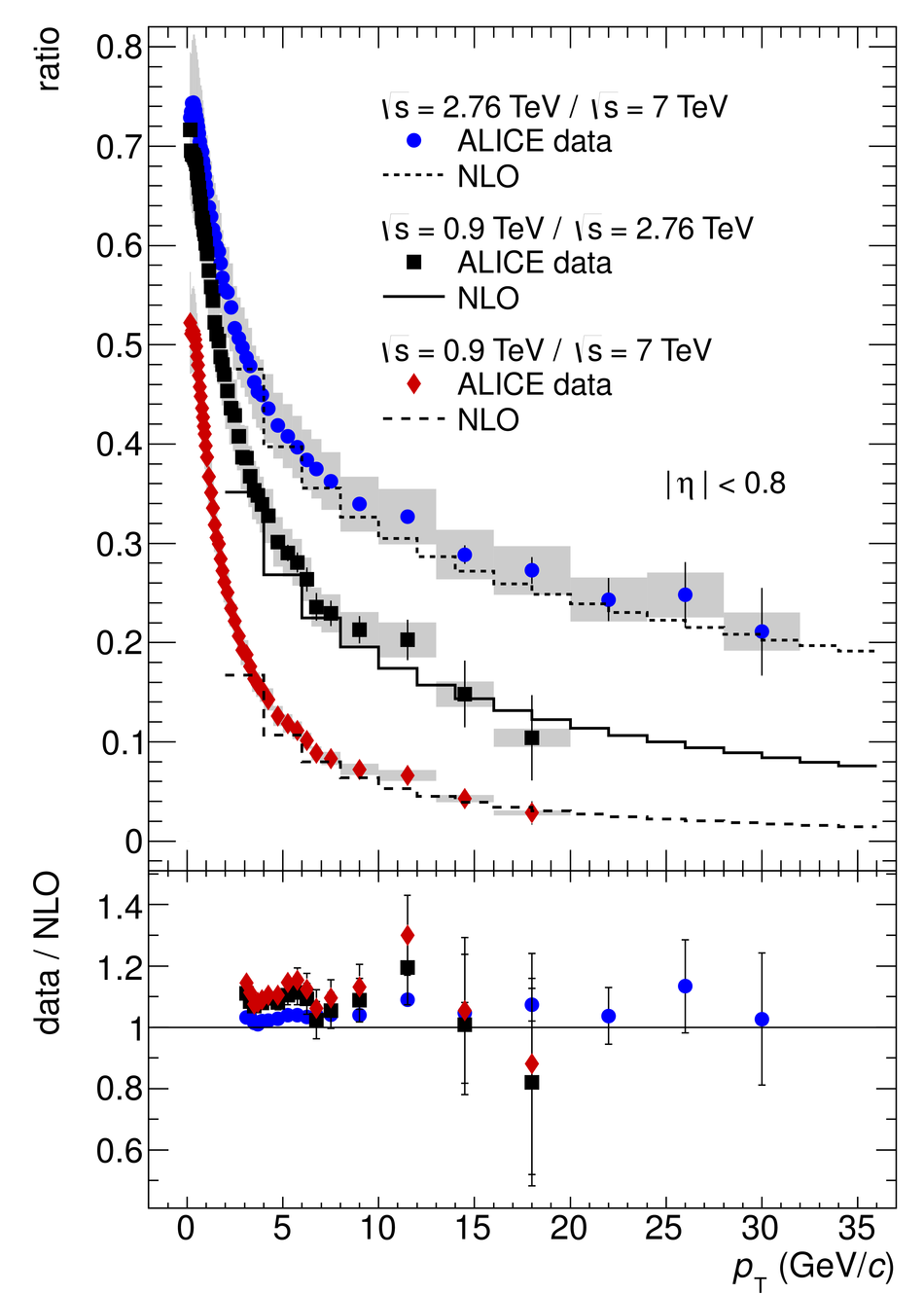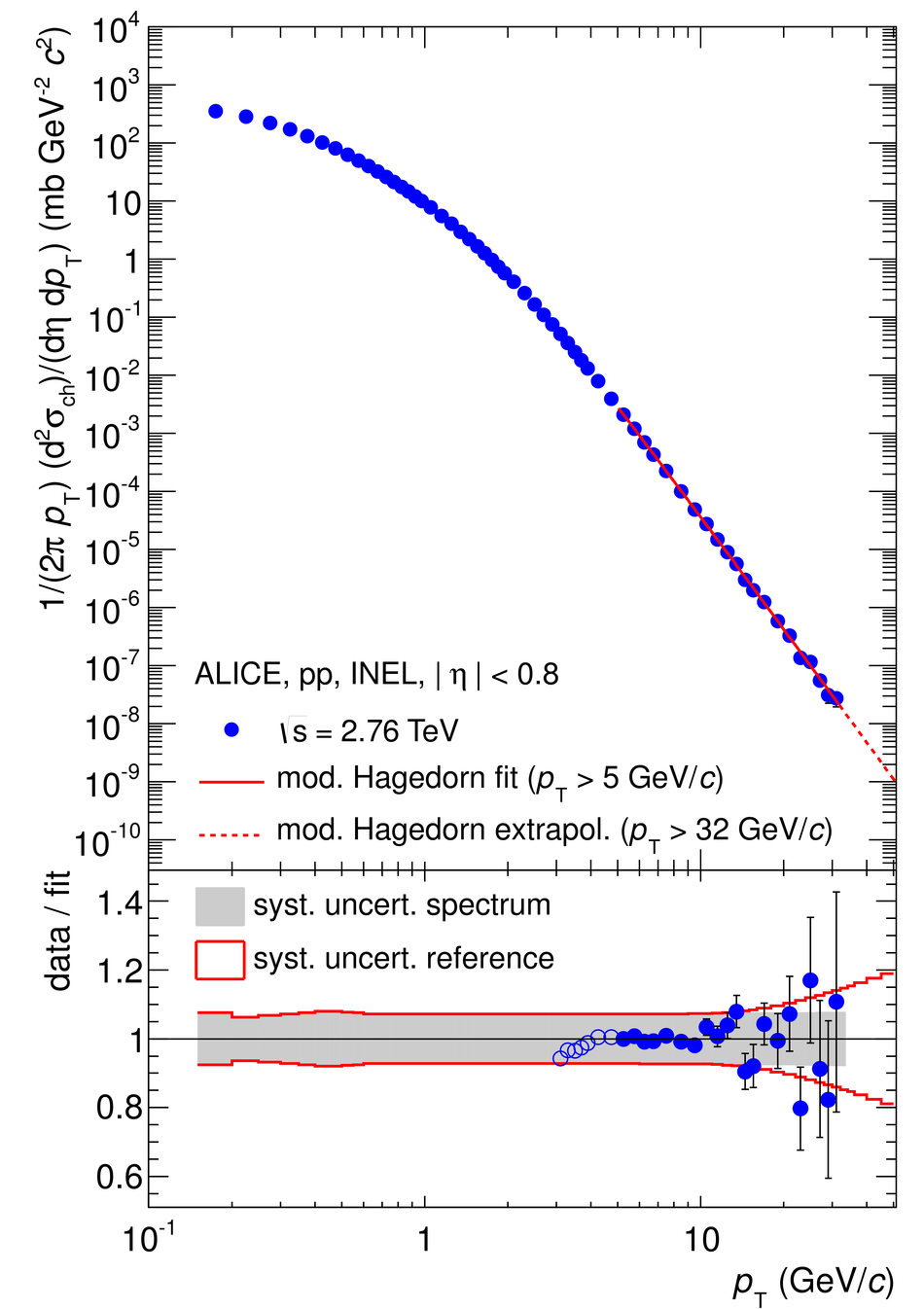Differential cross sections of charged particles in inelastic pp collisions as a function of $\pT$ have been measured at $\sqrt{s} = 0.9$, 2.76 and 7 TeV at the LHC. The $\pt$ spectra are compared to NLO-pQCD calculations. Though the differential cross section for an individual $\sqrt{s}$ cannot be described by NLO-pQCD, the relative increase of cross section with $\sqrt{s}$ is in agreement with NLO-pQCD. Based on these measurements and observations, procedures are discussed to construct pp reference spectra at $\sqrt{s} = 2.76$ and 5.02 TeV up to $\pt = 50$ GeV/$c$ as required for the calculation of the nuclear modification factor in nucleus-nucleus and proton-nucleus collisions.
Eur. Phys. J. C 73 (2013) 2662
HEP Data
e-Print: arXiv:1307.1093 | PDF | inSPIRE
CERN-PH-EP-2013-109





